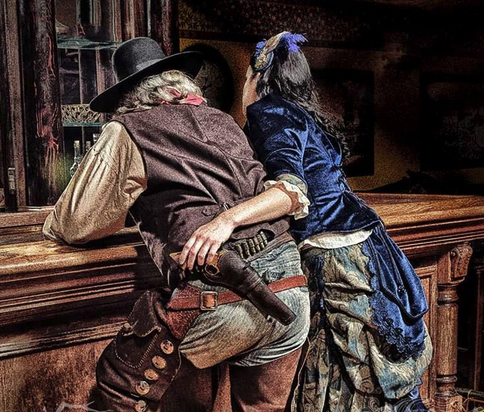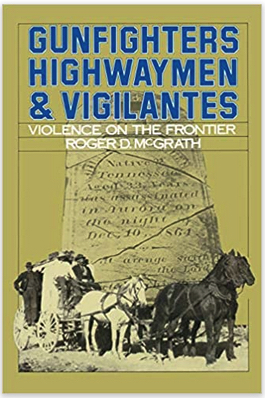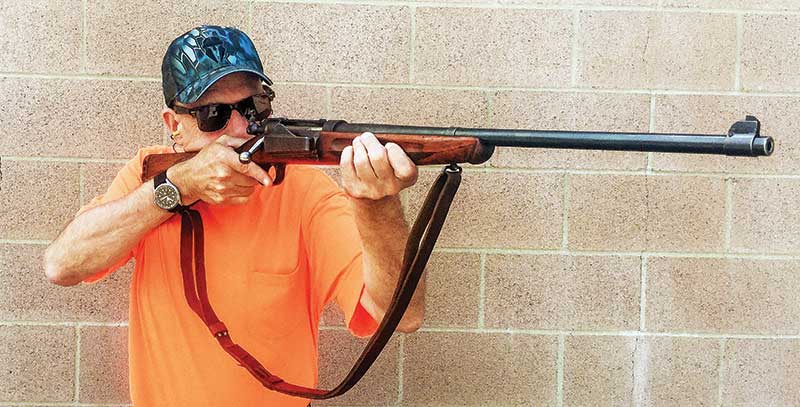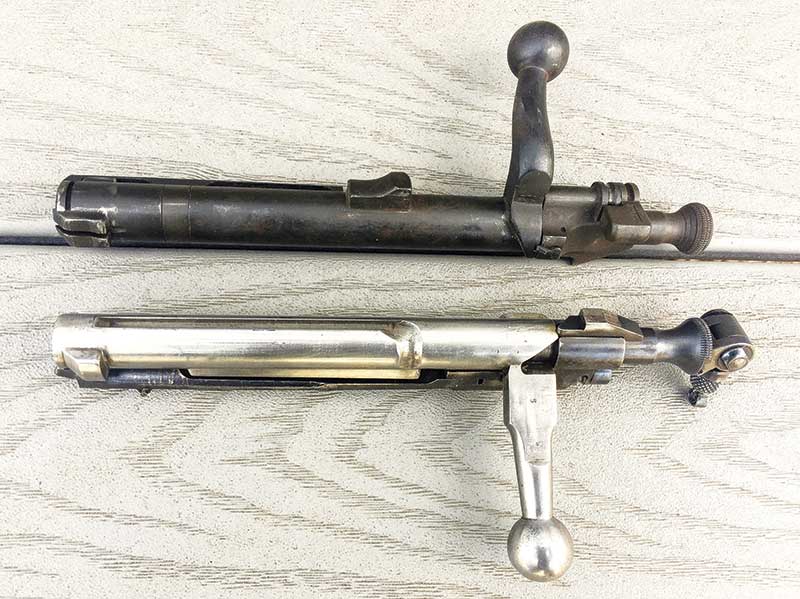Month: May 2022
As the United States service rifle, the Norwegian-designed Krag-Jorgensen was produced at the Springfield Armory from 1894 to 1904. It was used in the Boxer Rebellion, Spanish-American War and in the Philippine-American War before it was replaced by the Model 1903 Springfield.
This may represent a fairly short reign as our standard-issue service rifle, although it’s a couple of years longer than the M14 — although the ’14 remained in limited service for far longer.
Back In The Hunt
Although the Krag and its rimmed .30-40 cartridge may have been “obsoleted” by various Mausers, not to mention the Mauser-copycat ’03, it found favor with many hunters in sporterized trim. Its .30-40 cartridge — while not the equal of the .30-06 — was reasonably close ballistically to the similarly rimmed .303 British, at least in 180-grain configuration as opposed to the original 2,000 fps 220-grain loading.
It was, and is, a perfectly serviceable number for North American big game. In fact, it was used to take the world’s record (until recently) Rocky Mountain elk in 1899 according to Barnes’ Cartridges of the World.
Any commercial loading you may encounter is pretty much restricted to the 180-grain weight. Winchester, Hornady and Remington offer excellent hunting loads (Power Point, SP Custom and Core-Lokt) approaching the 2,500 fps mark — still about right for a general-purpose deer, bear and hog load. Regardless of fad and fashion, 3,000 fps is not the critical yardstick for a viable big-game load used at real-world yardages. Handloaders, of course, can go heavier or lighter.
Surplus Krags were shockingly inexpensive for decades and were often the only available choice for many hunters, particularly when there was a world war going on. The term “buck-fifty” Krag wasn’t all that much of an exaggeration.
Divine Flaws?
There were several American Krag variants — Models 1892, 1896, 1898 and 1899 in both rifle (30″ barrel) and carbine (22″ barrel) configuration. Many “civilianized” Krag sporters — usually 22″ carbine variants — had the side magazine “chopped” and replaced by a flush-fitting hinged cover. It only cut the 5-round cartridge capacity down by a couple of rounds but kinda destroyed the distinctive “Krag Kool” look of the originals.
Unfortunately for the prospects of Krag longevity, the Mauser stripper clip system had gotten all the major powers hot and bothered, so the simple, single-loading virtues of the Krag system were relegated to sportsmen. You could stuff a handful of cartridges in and — as long as the bullets were pointed the right way — once you snapped the cover shut, you were good to go.
Another factor contributing to the ’03’s adoption was the desire for an action permitting a more powerful cartridge than the 30-40 Krag (or .30 Army) which the .30-03 and .30-06 were. The single-lug bolt of the Krag action as slick-cycling as it was, couldn’t handle the pressures the multi-lug setup of the ’03 could.
The machining required to produce this wondrous side-magazine today would make any attempt at a current “Krag” prohibitively pricey. Me? I had one once, loved it, and traded it away. The lesson? If you have a nice Krag, hang on to it. Dump it and you’ll regret it. Trust me on this one.
One period military holdover is the magazine cut-off, a small lever at the left rear of the receiver which allows single loading without tapping into the main 5-round payload sitting in reserve.
Most changes in the M98 variant were minor and included a slight redesign of the bolt handle and a reversing of the operation of the magazine cut-off lever from the previous versions.
Incidentally, a few other notable American rifles have been chambered to .30-40 Krag, notably the lever-action M95 Winchester, the Remington-Lee Model 1899 bolt action and, much, much later, Ruger’s nifty little single-shot No. 3 Carbine.
.460 XVR S&W Magnum
Müller 1902 Prototype Pistol
Unloading A Single-Action Revolver
#10MinuteTalk – The 300 WSM… Finally…

There is actually a real misconception of the Old West that truly needs correcting. That is the notion of an uncivilized Wild West, where antisocial and violent behavior was the norm, and where citizens were afraid to leave their homes, afraid of rampant crime and in fear for their lives.
This savage perspective turns out to be incorrect—false assumptions of the Old West based on sensationalist press, the Buffalo Bill Wild West Show of the 1880s and ‘90s, and subsequently cowboy shows and Hollywood movies. Bands of working cowboys and good citizens did not go about town in their leisure time challenging, outdrawing, and shooting each other in a systematized orgy of violence and gunfights as portrayed in the movies.
Bad men and violent outlaws did kill each other, but almost always left the good people of the towns alone. The famous gunfight at the O.K. Corral in 1881 in Tombstone, Arizona, in which Wyatt Earp, and his brothers, Virgil and Morgan, with Doc Holliday, killed three of the outlaw “Cowboys,” became a celebrated incident not only because of the unique circumstances but also because brother lawmen killed brother outlaws in a historic shootout. Even then it was newsworthy and certainly not a daily occurrence.

In his book, Gunfighters, Highwaymen and Vigilantes: Violence on the Frontier, historian Roger D. McGrath has corrected the historic record with substantive scholarship. After studying the Sierra Nevada frontier towns of Aurora and Bodie, McGrath found that those mining towns, where audacious young men and gunmen roamed freely packing either Colt Navy .36 six shot pistols in Aurora or Colt double action “lightning” or “peacekeeper” revolvers in Bodie, were peaceful towns, except for the quarrels in the carousing and gambling saloons. Otherwise, both towns carried on well, and everyone not interested in whoring, drinking, and gun fighting were left alone.
True, the homicide rate was high among those carousing and looking for fights in the saloons, but in the rest of the populace, the old, the ladies, and those not willing to pick fights, homicides were rare. Likewise, robbery, burglary, and rape were rare. Murder was confined to the “drunkards upholding their honor.” The homicide rate for Aurora and Bodie were 64 and 116 per 100,000, respectively, compared to Washington, D.C., at 72 per year in the 1990s. Likewise, the burglary and robbery rates were 6 and 84 per 100,000, respectively, for Bodie; compared to 2,661 and 1,140, respectively, for New York City in 1980.
The townspeople, although they might have carried guns, respected each other, and townspeople did not even bother to lock their doors at night. Similar observations have been made by other researchers studying the supposedly violent and crime-ridden Lincoln County, New Mexico; the Kansas towns of Dodge City and Wichita in the 1870s; and the Texas frontier towns from 1875 to 1890.
Returning to the issue of the possible confiscation of American firearms in the current era, consider the practical obstacles, not to mention the constitutional protection. Trying to blame, register, ban, and confiscate (one step usually follows the other) over 300 million firearms owned by Americans would bring about a tinder box situation, at least an order of magnitude worse than Prohibition, for Americans obey just and moral laws but not capricious or tyrannical laws, and a veritable police state would be required to enforce the draconian gun laws that would be necessary to carry that out.
Thus, politicians who sadly continue to use the latest tragedy (and the emotionalism and the passions elicited in its wake) to push for the usual round of gun control—while ignoring the accumulated objective research published in the social sciences and the criminologic literature—are not sincerely lamenting the deaths of the innocent or sympathizing with their families, but attempting to score political points, political points at the expense of the victims or good citizens.
They are also further polarizing America and tearing apart the fabric of this great nation by using emotionalism rather than common sense to bolster their unwise, political actions. Let’s stop demonizing guns and end the shootings by incarcerating the criminals and identifying and healing the mentally ill, for much work needs to be done in the psychiatric and mental health arenas and in the task of reducing violence. Sensationalization of violence day after day by the press, the electronic media and the internet—heaped upon impressionable individuals subject to our increasingly dumbed down, popular culture and public education—is having a malevolent effect that needs to stop.
Written by Dr. Miguel Faria
Miguel A. Faria, Jr, MD is a retired professor of Neurosurgery and Medical History at Mercer University School of Medicine. He founded Hacienda Publishing and is Associate Editor in Chief in Neuropsychiatry and World Affairs of Surgical Neurology International. He served on the CDC’s Injury Research Grant Review Committee. This article is excerpted, updated, and edited from his book, America, Guns, and Freedom: A Journey Into Politics and the Public Health & Gun Control Movements (2019).
This article may be cited as: Faria MA. Gun Violence and the Wild West. HaciendaPublishing.com, February 28, 2022. Available from: https://haciendapublishing.com/gun-violence-and-the-wild-west-by-miguel-a-faria-md/.
Copyright ©2022 Miguel A. Faria, Jr., M.D


